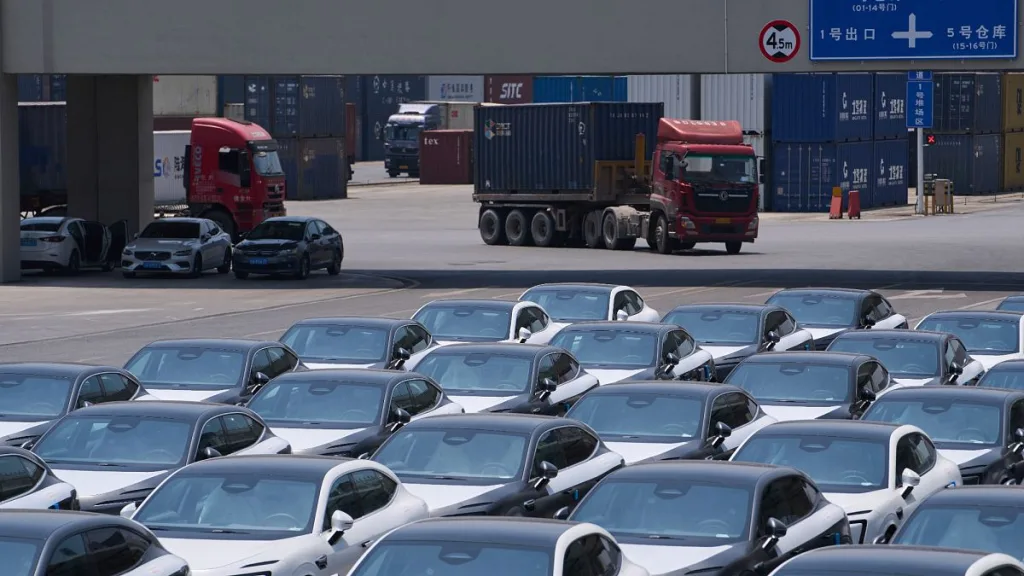In October, the eurozone’s private sector experienced a slight contraction, marking the second month in a row of diminishing activity.
The latest data reveals that the eurozone’s private sector continues to face challenges, as indicated by the Flash Eurozone Composite Purchasing Managers’ Index (PMI). The PMI only marginally increased from 49.6 in September to 49.7 in October, coming in below expectations of 49.8. Notably, any figure below 50 signifies a contraction in economic output.
Slowed Growth in Services and Persistent Manufacturing Contraction
Within the services sector, growth has decelerated more than anticipated, with PMI for services dipping slightly from 51.4 in September to 51.2 in October, also falling short of projections at 51.5. In contrast, manufacturing showed faint signs of relief, with the manufacturing PMI improving to 45.9 from 45, surpassing the expected 45.3.
New orders persistently declined for the fifth consecutive month, matching the pace of decline seen in September. Weak international demand was evident, with export orders diminishing at one of the sharpest rates of the year.
Businesses reacted to these challenging circumstances by reducing their purchasing activities and inventory levels of both raw materials and finished goods.
Employment trends mirrored the economic strain, as eurozone firms reduced their workforce for the third month in a row. This decrease is the most significant since late 2020, illustrating the severe challenges businesses face in maintaining staffing levels.
Divergence in Economic Performance: Germany vs. France
Germany, the largest economy in the eurozone, reported some positive developments. The German services sector outperformed expectations with a PMI of 51.4 compared to the anticipated 50.6. Additionally, the decline in manufacturing activity lessened, with the manufacturing PMI improving to 42.6, a rise from the previous 40.8.
In stark contrast, France witnessed a significant deterioration in business conditions. The French services sector experienced its steepest decline since March, while manufacturing output contracted more sharply than expected. The Flash France Composite PMI fell to 47.3 in October, down from 48.6 in September, which was well below the anticipated figure of 49.
Weak demand played a crucial role in France’s disappointing results, with respondents citing subdued consumer and business demand. Job cuts occurred in both the services and manufacturing sectors, a trend not seen for nearly four years.
Expert Insights
Dr. Cyrus de la Rubia, Chief Economist at Hamburg Commercial Bank, commented, “The eurozone appears to be in a rut, experiencing marginal contraction for two consecutive months. While the ongoing slump in manufacturing is somewhat offset by slight gains in the services sector, the outlook remains uncertain.”
He added, “Germany started the fourth quarter on a better note than expected; however, the GDP may remain flat for the year, as projected by the International Monetary Fund.” Regarding France, Dr. de la Rubia noted, “The French industrial sector continues to face a profound crisis, with no apparent recovery in both domestic and international order volumes. Particularly alarming is the further decline in expected output over the next twelve months.”
Impact on the European Central Bank
The current data poses a challenge for the European Central Bank (ECB). While inflationary pressures in the manufacturing sector seem to be easing, the services sector is still dealing with elevated costs due, in large part, to wage pressures. Dr. de la Rubia suggested, “This supports the idea that the ECB is likely to reduce key interest rates by only 25 basis points in December, instead of the 50 basis points that some analysts have speculated.”
Market Reactions
On Thursday, the euro rose by 0.2%, trading at $1.08, marking a bounce back from three days of losses, but it remains on track for its fifth consecutive week of decline.
Sovereign bond yields across the eurozone decreased, with German Bund yields falling by four basis points to 2.28%. Similar downturns occurred in France and Italy, with OAT and BTP yields dipping to 3% and 3.48%, respectively. Meanwhile, Spanish Bonos declined by six basis points to 2.97%, aligning its yield with France for the first time since early 2008.
European equities gained momentum, with the Euro Stoxx 50 rising by 0.7%. The automotive sector led the charge, particularly Renault, which saw its shares soar nearly 7% after exceeding third-quarter sales expectations and providing positive guidance for the fourth quarter.
The CAC 40 index also climbed by 0.7%, driven by firm performance in luxury stocks, including gains of 2.9% for LVMH and 2.6% for Kering. In Germany, the DAX index rose by 0.6%, spurred by a remarkable 4% increase in Volkswagen shares, while BMW and Mercedes-Benz saw their stocks rise around 3%. The FTSE MIB in Italy and the IBEX 35 in Spain both advanced by 0.3%.
Photo credit & article inspired by: Euronews



